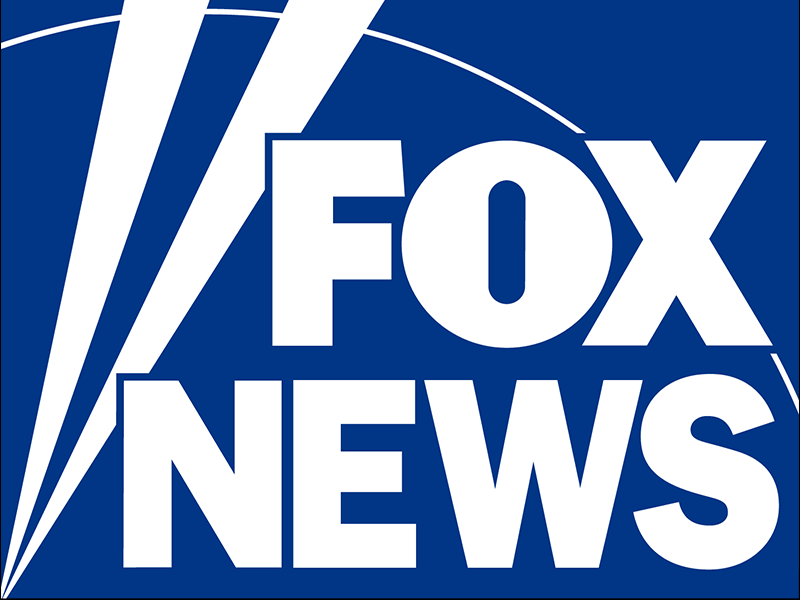Anti-establishment and anti-media sentiment reigned during the 2016 presidential election, creating space for hyper-partisan media outlets on the fringe left and right to drive a political polarization not seen before in recent U.S. history and that still exists to this day.
In grappling to understand how this cultural-political radicalization came to be, it’s clearly important to understand the emergent media structures on the both the left and right during that period.
Studying more than 1.25 million stories shared by the left and right, Harvard University academics concluded in Partisanship, Propaganda and Disinformation, that these observable poles did not evolve symmetrically. In fact, the right-wing media ecosystem operates as a fascinating insular economy of cross-links, which served as a backbone to a populist conservative movement continually fed by clicks and driven by narrative fallacy.
Unlike on the left, the cross-linking economy on the right shows clear hierarchical relationship between the major nodes. Although Fox News doesn’t link to the conspiracy theories of InfoWars or clickbait Gateway Pundit, a story can easily have hopped from node to node in either direction. Ultimately, this meant and still means the amplification and assimilation of extreme views, like anti-immigration or white nationalism, and narrative-affirming conspiracy theories.
Here are some of the big media players on the right, how they’re connected and what you need to know about them. Let’s start at the margins and work our way to the top.
Conspiratorial Fringes
Beginning at the fringes, there are dozens of small publications with small audience reach that make up the conspiracy machine at the very base of the pro-Trump media sphere. However, there are two that have risen as touchstones, even winning the affirmation of White House staff and president himself.
InfoWars

People you might have heard of: Owner and host Alex Jones, editor Paul Joseph Watson
InfoWars was independently launched by Alex Jones in 1999. Today, Jones is perhaps America’s most prolific conspiracy theorist. The Alex Jones Show boasts around 2 million weekly listeners and is where the self-described libertarian regularly rants against the corporate elites and globalists who, he says, seek to rob citizens of their liberties.
Jones has pushed several extreme conspiracy theories. He regularly focuses on mass shootings as domestic false flag operations undertaken by the government. He infamously said that Sandy Hook Elementary School was “completely fake” and that student victims of the Stoneman Douglas High School shooting, an incident also faked by the government, were paid actors. InfoWars also leading propagator of a conspiracy theory claiming a pizzeria in Washington D.C. was the center of a human trafficking operation, and here’s the partisan kicker, managed by high-ranking Democrats.
Despite his popularity now, Jones remained largely unknown to the mainstream before 2006, when media picked up on a conversation he’d had with actor Charlie Sheen in which they discussed how they believed 9/11 was an “inside job.”
InfoWars’ transition to a node in the right-wing pro-Trump media chain arguably began when Jones first met conservative political operative Roger Stone in 2013. Stone would become a close advisor to advisor to the Trump campaign. He was impressed with Jones reach and audience. Consequentially Trump appeared on Jones’ show in December 2015, when he was a presidential candidate and complimented the host’s “amazing reputation.”
Trump’s anti-establishment rhetoric on the campaign trail appealed to Jones, who upheld his promise of support by regularly backing Trump’s policy decisions. InfoWars, as a result, took a strong pro-Trump stance during the campaign and worked overtime to discredit Democratic presidential candidate Hillary Clinton as corrupt and unfit for office.
Although InfoWars is shown to acquire a comparatively smaller number of links from other websites, its hyperpartisan attacks began to work and, somehow, find their way into the mainstream. In the fall of 2015, InfoWars began selling t-shirts in its online store emblazoned with the slogan “Hillary for Prison.” At the Republican National Convention in 2016, it was the rallying cry for supporters of candidate Donald Trump’s presidential campaign.
By early 2017, InfoWars was being taken seriously enough that the White House granted one-day press credentials.
Gateway Pundit

People you might have heard of: Founder Jim Hoft, reporter Lucian Wintrich
Established by Hoft in 2004, the Gateway Pundit is one of the most read conservative blogs online, despite a record of dubiously sourced stories and outright conspiracy peddling.
The Gateway Pundit has pushed false information during mass shooting incidents, framing perpetrators as left-wing or claiming that victims were crisis actors.
Within the right-wing media sphere, however, the Gateway Pundit reached peak popularity when it aligned with Trump during the 2016 presidential election. In that time, it boasted more than a million unique visitors a day. When Trump made office, reporter Wintrich was granted official White House press credentials.
Ever since, it’s highly partisan and clickbait articles have been pushed by Trump administration officials and conservative pundits like Fox News’ Sean Hannity—boosting its profile as a useful partisan player. Of course, the content that the Gateway Pundit was pushing at the time complimented major narrative threads, that there was bias against Trump as a Republican outsider or Trump’s Democrat rival Hillary Clinton was in failing health.
On the campaign trail, Trump tweeted links to the Gateway Pundit on 14 occasions and even referenced one article in his Republican nomination acceptance speech.
Bridging Sites
There are several key websites that the Harvard report refers to as bridging sites. Bridging sites help legitimize and normalize the most extreme views and paranoid conspiracy stories for consumption by establishment or moderate Republicans, framing narrative within more traditional conservative bounds.
There are several bridging sites, including the Daily Caller and the Drudge Report, but there was one website to rule them all.
Breitbart News

People you might have heard of: former White House Chief Strategist and former Breitbart chief Steve Bannon, founder Andrew Breitbart, editor-in-chief Alex Marlow
The publication was founded initially as a news aggregation website by conservative provocateur Andrew Breitbart, who led the it until his death in 2012. Under his leadership, the website began to articulate its unique brand of anti-establishment right-wing populism and criticism of perceived liberal bias in the mainstream media.
Breitbart gained notoriety for its support of the Tea Party movement and for its central roles in exposing the sexual scandal involving then-Democrat lawmaker Anthony Weiner.
Steve Bannon assumed leadership from 2012 and it was launched again into the mainstream by its backing of the Trump presidential campaign in 2016. Its positive backing of Trump led former editor Ben Shapiro, now of the Daily Wire, and several other staffers to resign in disagreement of the publication’s direction.
Bannon described the website as “a platform to the alt-right” which was significant given the nationalistic turn in political sentiment. Breitbart’s anti-establishment focus and, in particular, its tough anti-immigrant position drew members of the alt-right and far-right alike.
Importantly, though, Breitbart was key to bolstering Trump’s candidacy and very early on the campaign trail positioned itself as the key pro-Trump publication, becoming a focal point for his supporters and targeting his political rivals on the left and right.
Behind all of the pro-Trump coverage was Bannon, who reportedly had final approval of all campaign stories. Bannon, of course, would be rewarded with an active role in the Trump campaign and eventually the administration as White House chief strategist. He returned to Breitbart after leaving the White House but stepped down in January after his sudden fall from grace in the wake of Michael Wolff’s book Fire and Fury
Since then Breitbart appears to have diminished in its influence. In March, data analytics firm comScore reported that readership had dropped by half. While some conservatives pointed to how Facebook’s moves to de-prioritize news content on News Feeds appeared to be disproportionately impacting right-wing alternative media outlets, others cited the ideological conflict within the movement caused by the Bannon-Trump fracture.
“They hitched their wagon to Trump, but more importantly, they hitched their wagon to Bannon,” Shapiro explained to Politico at the time. “And when Bannon left, what was the character of the site going to be? That was always a serious question.”
However, there is an important lesson in how Breitbart succeeded as a vehicle at election time to shift the conservative window of discourse farther to the right—especially on social media. Breitbart hit on some of the big messages of the Trump campaign. In particular, Harvard researchers point to the popularity of Breitbart’s hard anti-immigration coverage. On Twitter, it’s immigration stories were shared twice as much as that of the liberal newspaper the Guardian.
Breitbart’s importance in the media ecosystem is tied to its role as a major bridging engine for fringe sites, cycling narrative-serving conspiracies and far right talking points into the pre-election social media conversation.
Harvard media researchers noted that, for example, Breitbart stories linked back to the Gateway Pundit 63 times. Indeed the Gateway Pundit is noted in the study for having occupied a slightly “elevated role” when it came to a share of Breitbart backlinks. Important to note that Hoft, a former corporate executive, is long-time personal friend of former Breitbart chief Steve Bannon.
As it became an increasingly influential node in the conservative media landscape, the publication repeatedly criticized other conservative media organizations like Fox News in order to drive a pro-Trump narrative into the mainstream—a pressure that Fox News would eventually fold to.
Conservative Mainstream
Fox News

People you might have heard of: founder Rupert Murdoch, host Sean Hannity, host Tucker Carlson
Founded in 1996 by media mogul Rupert Murdoch, who made the late Roger Ailes its CEO, Fox News is the biggest source of conservative news and commentary. For more than 14 years it has remained the most-watched channel in the country, a direct line of communication to millions of Republican Party voters.
The network tends to hire and fire its punditry in a disciplined way to reflect the party’s broader political temperament. Fox News, however, like the Republican Party, was overtaken by Trump and the surge of populism he represented.
Network supremacy and coziness with the establishment was, however, challenged and broken when Breitbart came on scene during the recent presidential election. Internet-native and pro-Trump Breitbart published a rush of articles at the beginning of 2016, in the run up to the Republican primaries, with the aim of dislodging Fox News’ credibility—contrasting its hardline stance with the latter’s moderate conservative positions.
“The five most-widely shared stories [at that time] in which Breitbart refers to Fox are stories aimed to delegitimize Fox as the central arbiter of conservative news,” researchers wrote in Columbia Journalism Review, “tying it to immigration, terrorism and Muslims, and corruption.”
Still, at the end of February, Breitbart published an article pointing to Fox News’ 50 percent fall in ratings among Republicans and slammed the network’s “pro-Rubio/GOP Establishment bias.”
The pressure paid off. As the primaries ended, with Trump named Republican presidential candidate, Fox News fell in line and the broader ecosystem began its attack on liberal media outlets. Two months later, researchers explain that Fox News’ popularity began to recover and that’s when its direction began to change.
Today, as Breitbart’s influence wanes, critics have noted a shift in editorial demeanor evidenced most obviously by Fox News’ prime-time lineup change. Conservative old gaurd like Bill O’Reilly and Megyn Kelly are out, while on-screen pundits like Sean Hannity, Tucker Carlson, and Laura Ingraham are in.
Hannity, arguably the network’s biggest star, regularly promotes and platforms conspiratorial narratives that were formerly the sole preoccupation of websites like InfoWars.
The host gave air to multiple conspiracy theories pushed by fringe websites against Hillary Clinton during the election, questioning her health issues and making claims that she’d sold uranium to Russia when secretary of state. Hannity was also a major mainstream proponent of the theory that murdered staffer Seth Rich was behind the Democratic National Committee email leak to Wikileaks, just before election day, and the pundit regularly spouts paranoid claims that the “deep state” has mobilized against the Trump administration.
It’s not just the punditry that is veering right, the institution as a whole is realigning itself. Jonathan Albright, the research director at Columbia’s Tow Center for Digital Journalism, told Politico in December that Fox News Digital had also “gone a little Breitbart.”
An important recent appointment guiding that ongoing evolution is Noah Kotch, Fox News digital editor-in-chief and vice president. Under his guidance, the network’s digital drive has been ramped up, with over 100 staff added and a 29 percent increase in average monthly unique visitors this year.
Fox News Digital is doing better than ever but many are crediting this to a change of editorial slant that moves from a more traditional conservative analysis to a tabloid-style criticized by some as overtly pro-Trump. This manifests in attacks on special counsel Robert Mueller’s ongoing investigation into Russian interference in the 2016 election.
In March 2018, Fox News contributor and army veteran Ralph Peters quit the network and went so far as to describe it as a “propaganda machine” for the Trump administration.
“When prime-time hosts—who have never served our country in any capacity—dismiss facts and empirical reality to launch profoundly dishonest assaults on the FBI, the Justice Department, the courts, the intelligence community… I cannot be part of the same organization, even at a remove,” he wrote in a letter announcing his departure.
Fox News has always been a partisan source of news to the Republican Party’s grassroots voting base, but now it’s exposing traditional conservatives to the radical messages of the pro-Trump movement. Just how this will affect the politics of moderate Republican voters and the Republican Party as a whole truly remains to be seen.
What is for sure, is that this direction is not likely to change—not when the network is being rewarded with record-breaking traffic and exclusive interviews with the president himself.


